Standing on the defendant’s dock at his trial in Johannesburg, a black man gives a speech that would inspire nations. It’s 1964 in South Africa, a country torn by racial segregation, and this man is speaking about his ideal of freedom, democracy and equality for all people, black and white.
He is on trial for leading the opposition against the violent apartheid government – most of the times he had accomplished this peacefully, sometimes less so. He took no pleasure in the violence, he says, but saw it as the only means to counter a political regime that showed no restraint in using violence against its own people.
Recommended Reading
Who was Grigori Rasputin? The Story of the Mad Monk Who Dodged Death
Diverse Threads in the History of the United States: The Life of Booker T. Washington
FREEDOM! The Real Life and Death of Sir William Wallace
The speech takes three long hours, and concludes with the now famous words “it is an ideal for which I am prepared to die”. Although it did not win him clemency from the oppressive South African regime, it did help him dodge the death penalty that the prosecution was expecting. This man is Nelson Mandela, and he would spend 27 years in prison as a result of this trial.
Mandela was born in a noble family of the Thembu tribe and spent much of his early childhood in a small village in Cape Province, tending to the local cattle herds. As a young boy, he had garnered quite the reputation among his peers for being both stubborn and rebellious, character traits he would later say he inherited from his father.
His parents were both illiterate, but had sought a better future for their son. As if knowing that her son was destined for greatness, his mother sent a seven year old Mandela to the local Methodist school where he learned how to read and write. One of his teachers there gave him the forename Nelson, as part of the ritual of being baptized a Methodist Christian. As a teenager he was sent to study under the guardianship of the Thembu regent, which allowed him to continue with a more rigorous education program. Being naturally gifted, Nelson excelled at any subject he was given – English, geography, history, anthropology – and in university he would also become an accomplished athlete and dancer.
Around this time, young Mandela discovered his life-long love for African history. Because of the dominating white culture at the time, the habit in South African schools was to emphasize the greatness of European history and dismiss native African history as primitive or meaningless. This did not sway him however, and Mandela’s interest in the African people and their culture would endure.
It was during his years at the university of Witwatersrand that Mandela came in contact with a group of students and political activists that would help shape his core values and nurture his understanding of politics. Perhaps this was when his unyielding sense of social justice first awakened. When he was later interviewed about this period of his life, Mandela said he didn’t make a conscious, calculated decision to become politically involved as a young man. Rather, it was something he seamlessly fell into and things couldn’t have happened any other way for him.
Although he had to deal with racial discrimination as a student, Mandela became known for not caring about the race of the people around him. Instead he cared about their values and ideals. He befriended Ruth First, a young Jewish woman with interesting, new ideas about left-wing politics, equality and the fledgling ideology of communism. He also befriended Anton Lembede, a charismatic and uncompromising black man who later became known as the architect of the African nationalist ideology. Mandela was quickly drawn in by Lembede’s ideals, which, if realized, would finally allow black Africans the chance to attain independence and determine their own future. Unfortunately, this ideology rejected multi-racialism and, although Mandela initially liked it, he later broadened his views considerably and chose to disavow Lembde’s exclusionary beliefs.
He soon joined the African National Congress (ANC) in 1943 and, aided by fellow activists Oliver Tambo and Walter Sisulu, he established the organization’s youth league, the ANCYL. Initially he only thought to oppose racial injustice peacefully, by avoiding direct confrontation with the government. A “stubborn sense of justice”, as he would later describe it, guided his beliefs and actions. But when an all white party won the 1948 elections on a racialist platform, effectively establishing the Apartheid regime, he felt he had to take his commitments further. As he began dedicating his life almost exclusively to political pursuits, he never graduated from the University of Witwatersrand.
Instead, he quickly rose through the ANC ranks and by 1950, he had become one of the organization’s national leaders. Unsatisfied with the answers that Lembede had offered, he started reading Marxist literature and became increasingly fascinated with the concept of a classless society, where things are shared and communal. He also developed an intellectual interest in Eastern philosophies that preached non-violent resistance. Under the influence of these novel ideas, he worked tirelessly on the 1952 joint “Defiance Campaign against Unjust Laws”, which saw ANC accept the support of communist and Indian protest groups alike. The campaign was a smashing success and on June 22 at the Durban rally, Mandela addressed a crowd of 10.000, encouraging people of all colors and backgrounds to protest the unjust government. This helped ANC’s popularity skyrocket and established Mandela as the leading black political figure in South Africa.
Outside of his political activities, in the early 1950s Mandela worked for various law firms, eventually passing all qualifications to become an attorney. With his friend Oliver Tambo, he opened the only black-run law firm in the entire country, which they named ‘Mandela and Tambo’. The duo divided their work such that Tambo would be in charge of all the paperwork, while Mandela represented the clients in court. News of the all black law firm spread fast and it became so successful that both lawyers regularly had long lines of clients filling the corridors outside their office. Most of their clients were black people who had been victims of police brutality. This made the local authorities strongly dislike the business, so they were frequently harassed and eventually forced to relocate.
Aggrieved by the ever-spreading injustice he witnessed and frustrated with the failures of peaceful protests and legal recourse, by the latter half of the 1950s Mandela was beginning to realize that violence would eventually be a necessary evil in ending the apartheid. During this time, he received several bans on public speaking, which he frequently defied even if it meant he would sometimes be arrested. With ANC’s help, he put forth a comprehensive political program in which he called for the creation of a democratic, color-blind state and the nationalization of the core industry. By 1959, this had earned him the ire of Africanist groups which staunchly opposed collaboration with other races – a view Mandela described as immature and naive.
Latest Biographies
Queen Zenobia: The Charismatic Empress of Ancient Syria
Eleanor of Aquitaine: A Beautiful and Powerful Queen of France and England
Frida Kahlo Accident: How a Single Day Changed an Entire Life
The following year, he took part in the widespread demonstrations against pass laws – which formed a discriminatory passport system that restricted the freedom of movement for black Africans. These demonstrations quickly degenerated however, leading to the Sharpeville massacre in which policemen shot and killed 69 unarmed black protesters. In solidarity with the victims of the massacre, Mandela publicly burned his passport and allowed the press to photograph him doing so.
The Sharpeville massacre represented the final straw in the ANC’s passive struggle for the liberation of South Africa’s native people. How much violence and degradation were they to endure? For Mandela, it seemed like traditional, peaceful protests only brought more violence down upon black people. Police brutality escalated, politically “inconvenient” people were routinely harassed and abused by authorities. The South African government soon outlawed the ANC, and other pan-African protest groups altogether, and declared martial law. Mandela was subsequently arrested and sent to prison in Pretoria where he would be detained for 5 months without charge. He was kept in unsanitary conditions and was denied any contact with his lawyers. It became clear that the path of peaceful resistance had reached its limit and it was now time to take decisive action against the South African government. The fist step was to reshape the ANC on a national level into an organization with a cell-like structure.
But how could Mandela re-organize the ANC and drive recruitment efforts without drawing too much attention to himself? The ANC was still banned and there was a warrant out for his arrest. Seeing no other way around it, he traveled the country incognito, disguising himself as a chauffeur. As he helped organize a massive stay-at-home strike, he met with journalists in secrecy, warning them that violence would soon be inevitable. Tensions were running high among all anti-apartheid groups, and the ANC was in a unique position to channel and guide some of that anger.
Inspired by Fidel Castro’s revolutionary organization, the 26th of July Movement, Mandela joined forces with his long time friend Walter Sisulu and Jewish communist Joe Slovo, to form Umkhonto we Sizwe (“Spear of the Nation” in Zulu, and popularly known as the MK). Not wanting to tarnish the reputation of the ANC, the MK was originally branded as a separate organization, although it was soon clear that it was, in fact, the armed wing of the ANC. Though he did not identify as a communist himself, Mandela seized the opportunity to work together with like-minded people who strongly opposed the apartheid. He would frequently call on the help of white communist MK members who were able to hide him in their homes when the police was looking for him.
Even after he accepted that violent acts against government property would be inevitable, Mandela still hoped that they could somehow avoid human casualties and an all out civil war. In its first statement, MK describes plans to sabotage the government without leaving behind any human victims and warns of the dangers the government is potentially exposing civilians to if it continues oppressing the native population. Their plans included bombing military installations, power plants and communication and traffic lines at night, when civilians would not be present. Mandela would later say that although he did not want anyone to be killed, at the time much of his motivation to avoid casualties was pragmatic rather than ethical, in that it offered the best hope for racial reconciliation afterwards.
In December 1961, the MK made its presence known to the world with a loud bang – 57 bombs went off on the Day of the Vow (a public holiday in South Africa, currently known as the Day of Reconciliation), with more bombings to follow on New Year’s Eve. Although the sabotage campaign was successful, it did not convince the government to change its policies, and the ANC was branded a terrorist organization.
Hoping to spread awareness of what was happening in his country and receive international support, Mandela left South Africa in secret and toured several African nations. He held political speeches and met with the leaders of Tanzania, Ethiopia, Egypt, Tunisia, Morocco, Liberia, Mali, Guinea and Senegal, who were thoroughly impressed by his rhetoric and the strides he had made with the ANC. Afterward, he made his way to London where he was enthusiastically greeted by the British media, anti-apartheid activists and leftist politicians alike. Although they were unable to intervene in the affairs of a sovereign state, the international community was closely watching the events in South Africa and was largely sympathetic to the ANC’s cause.
By 1962, he had returned to South Africa. He was soon apprehended by the police and put on trial for inciting riots, evading authorities and leaving the country illegally. Mandela would originally be sentenced to only 5 years in prison, but as information emerged linking him to the MK’s activities, his charges changed to sabotage and conspiracy to overthrow the government. This became known as the famous Rivonia trial in which Nelson Mandela would be sentenced to life imprisonment.
Of the ten activists implicated in the conspiracy, four would deny involvement with the MK, while Mandela and the other five freely admitted to trying to sabotage the government. He did not shy away from politicizing his trial, using the defense proceeding to talk about the oppression of the native population under the white minority government as well as the ANC’s goals to bring equality and justice for all. This was no longer about his personal freedom, because he knew the South African government would convict him no matter what. The law had never been fair to black people in South Africa, so he had no reason to expect a fair trial.
At the start of the defense proceedings, he gave the famous “I am Prepared to Die” speech. It had such a strong emotional impact and resonated with so many people, that it would be widely distributed in the South African press in spite of strict censorship laws. Witnesses claimed that when he finished his speech, a deep, emotional sigh emanated from the black side of the audience. Such was the power of Nelson Mandela’s words. He was, perhaps above all, an unparalleled public speaker who helped raise the voice of millions of oppressed people.
In the aftermath of the trial, Mandela and the other Rivonia trial convicts were taken to the Robben Island prison where they would spend the next 18 years of their lives. Upon his arrival at the prison, Mandela was deemed a class D prisoner, the lowest possible rank. He was isolated from the general population and confined to a tiny, damp cell. He would sleep on a straw mat and spend his days breaking lime rocks into gravel. At night he worked on his undergraduate degree in Law via a distance learning course affiliated with the University of London.
In spite of being frequently disparaged and abused by the prison’s white wardens, Mandela did not give up on his ideal of union across races. He learned Afrikaans and tried to establish a positive relationship with the wardens who might some day have changed their views. He championed the cause of the Robben Island prisoners, and would spend many years asking for better prison conditions, using his high profile status to lobby for the prisoners’ plight whenever possible. He also tried to build relationships with any opponents of the apartheid who were imprisoned at Robben Island, even if he did not share in their ideology.
By the early 1980s, the South African government was facing increasing international pressure to release Mandela. The strongest opposition to his release, however, came from Ronald Regan and Margaret Thatcher, who identified Mandela with communism and considered him a terrorist. With their support, the South Africa government felt confident enough to repel the calls for his release for several more years.
In 1982, the Rivonia trial convicts were sent to a prison in Cape Town, a move Mandela believed to have occurred because the apartheid regime feared his influence on the Robben Island inmates. Racial tensions in South Africa were swiftly approaching a breaking point, and many were fearing civil war. The international community, spearheaded by the UN, pressured multinational banks to stop investing in South Africa, further isolating the country and leading to economic recession. In an attempt to control the crisis, P.W Botha, the South African president at the time, half-halfheartedly offered to release Mandela from prison, under strict conditions that would limit his political activities. As expected, Mandela refused the deal, saying that only free men can negotiate and implying that so long as political opposition to the apartheid is still illegal, he is not truly free.
Between 1985 and 1988, several renowned politicians and international delegations tried unsuccessfully to negotiate Mandela’s release, spurring public unrest that was met with violent repression from the Botha government. At one point, he was again promised release and even the legalization of the ANC if only he agreed to a list of undignified terms: that he was to renounce using violent attacks against government property and that he was not demand majority rule. Again, Mandela rejected these terms, stating that it was the government who had to renounce violence first.
On his 70th birthday in 1988, a “Free Nelson Mandela” tribute concert was held at the Wembley Stadium in London. It was broadcast in 67 countries and reached an audience of 600 million, cementing Nelson Mandela’s status as a heroic figure in the struggle against racial oppression.
The last couple of years of his imprisonment were spent at yet another prison, where Mandela was able to live in the warden’s house and enjoy much better conditions. During this time, he met with the new South African president F.W. de Klerk, who seemed convinced that the apartheid was no longer viable. Together with Mandela, de Klerk negotiated the legalization of all formerly banned parties and activist groups and shortly thereafter, he announced Mandela’s unconditional release. Finally, he was offered a deal he could accept without reservations.
In February 1990, at the age of 72, Nelson Mandela was released from prison. As he walked out, he was greeted by the press and a large crowd of supporters – his release was being broadcast live all around the world. He took this opportunity to restate his ideals of peace and unity, expressing the hope that violence would no longer be necessary and that the government would be willing to give the black majority the right to vote in any elections.
Up until the South African general elections of 1994, Mandela traveled the world, meeting with numerous world leaders and speaking publicly to promote his ideals. Although he found support and encouragement abroad, things proved more difficult back home. Despite his hopes, negotiations with the South African government didn’t go smoothly and violence did not only continue, but it dramatically escalated. Although he had originally been friendly with de Klerk, Mandela began doubting him as he saw the South African president more interested in perpetuating the illegitimate power of the white minority rather than help transition South Africa towards true democracy. De Klerk eventually conceded to organizing multiracial elections, a national unity government, a US inspired Bill of Rights and a constitution guaranteeing that South Africa is a liberal democracy.
As expected, the ANC secured a sweeping victory, and Mandela was inaugurated as South Africa’s first black president on the 10th of May, 1995. Despite inheriting a country marred by racial inequality, he proved to be a forward thinking president, implementing policies that could be described as liberal and progressive. He saw racial reconciliation as the main goal of his presidency, but he also tried to bridge the economic gap between white and black communities by increasing welfare spending. In 1996, he promulgated the first democratic constitution of South Africa, effectively establishing the country as a constitutional democracy. In 1999, the seasoned activist and politician officially retired, choosing to dedicate his time to various humanitarian causes, such as the fight against HIV/AIDS. He made his final public appearance during the 2010 FIFA World Cup, which was held in Johannesburg.
Explore More Biographies
Erwin Rommel: Life, Achievements, and Death of the Famous Desert Fox
Catherine the Great: Brilliant, Inspirational, Ruthless
FREEDOM! The Real Life and Death of Sir William Wallace
Laura Ingalls Wilder: Life, Family Story, Works, and more!
Stubborn sense of fairness: Nelson Mandela’s life-long struggle for peace and equality
Nathan Bedford Forrest: Life and Service of the Military Genius
After struggling with numerous health problem for many years, Nelson Mandela died in 2013 at the age of 95, surrounded by his family and friends.
The struggle for peace, equality and cultural reform that he embodied in the latter half of the 20th century remains a topical issue to this day. Perhaps more so now in 2016, a year marked by racially-charged elections in the United States and growing cultural tensions in Europe in the wake of the migrant crisis.
READ MORE:
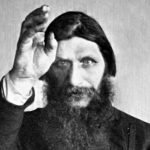
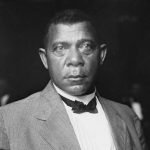
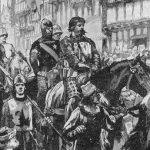
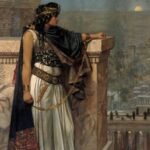
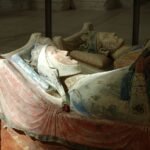
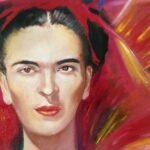
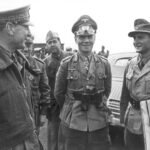
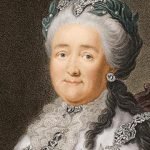
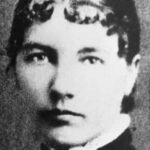
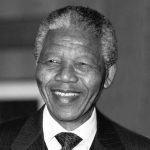
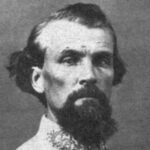
Hi, I would like to use a image from your website. The source image is mention as posible.com, but no were to be found. Can you help me? I would like to have a agreement to use the image in a documentary.
Thank you for reaching back to me,
Martine Tremblay
514-384-4061 ex : 221